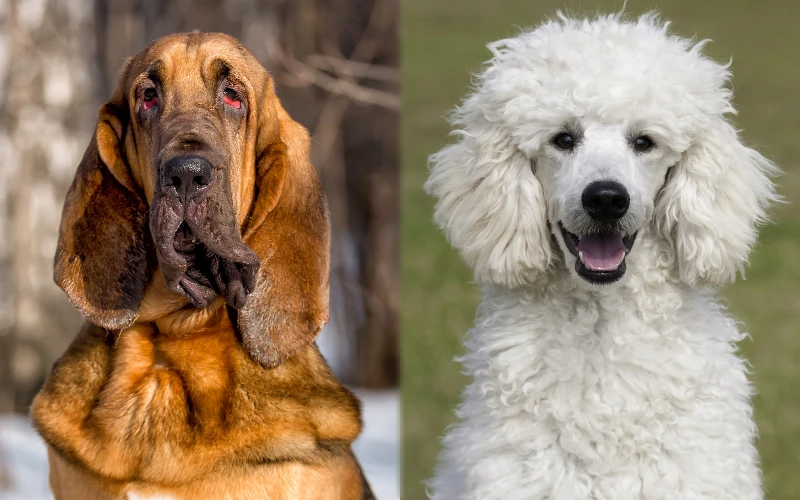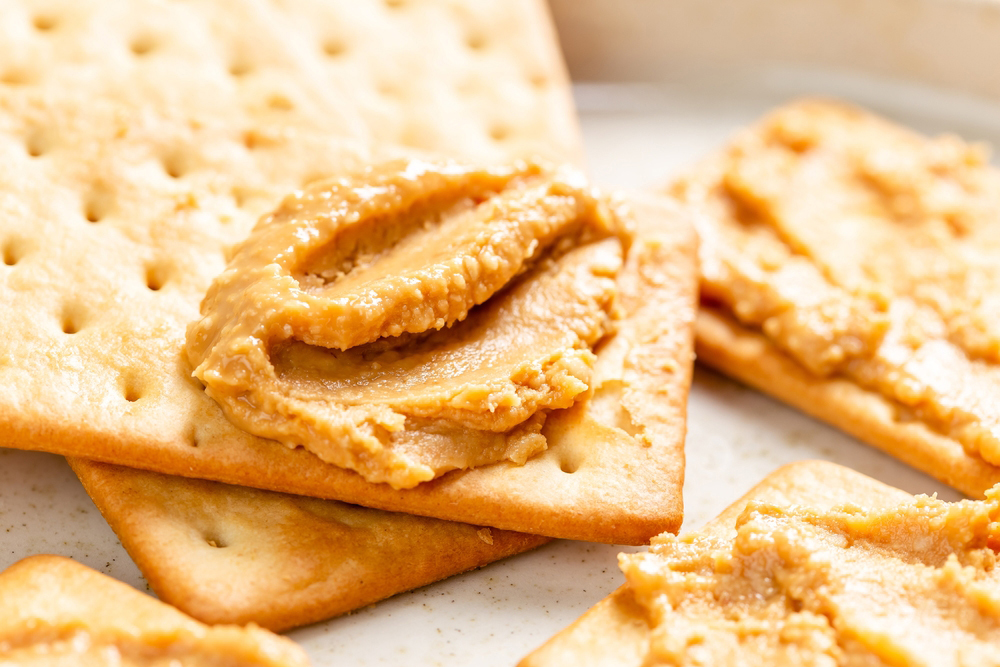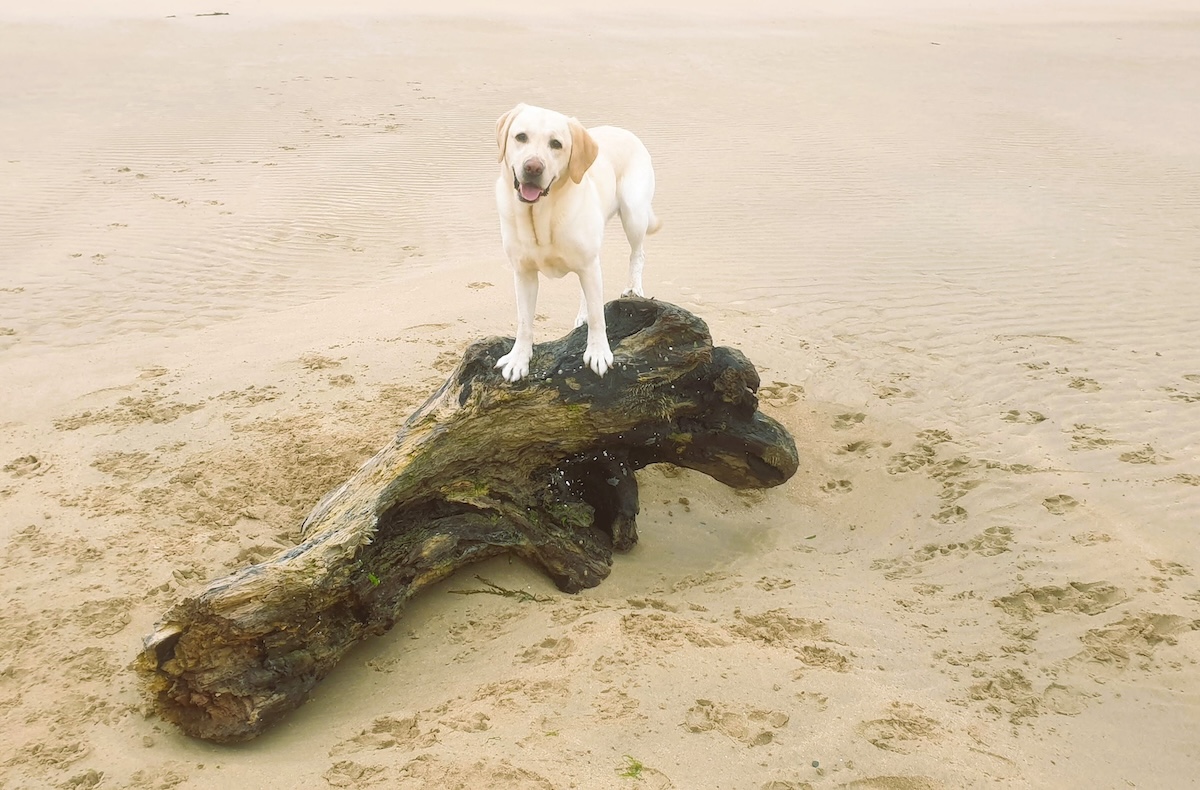Click Below to Skip Ahead
The Bloodhound Poodle, or Bloodhoodle, is a unique doodle breed. They are incredibly rare right now, but hopefully, they will begin to grow in popularity because these are adorable dogs! This breed is also highly sociable, tolerant, and active, so they make wonderful pets for the right people.
If you think the Bloodhoodle might be a good fit for your home, keep reading! We have all the relevant information you need, from whether these dogs get along with other animals to how much grooming you’ll need to do with them.
Breed Overview
Height:
23–27 inches
Weight:
60–140 pounds
Lifespan:
10–15 years
Colors:
Black, white, gray, tan, silver, cream, blue, liver, sable, brown, apricot, red
Suitable for:
Active families, active singles
Temperament:
Friendly, intelligent, affectionate
The Bloodhound Poodle is, of course, a hybrid breed created by mixing the Bloodhound and the Poodle. It might seem like an odd mix, but these pups are very cute and friendly. However, how these dogs look and act differs depending on which parent they take after more.
Bloodhound Poodle Characteristics

Bloodhound Poodle Puppies
The Bloodhound Poodle mix (or the “Bloodhoodle”) is a rarer breed, so locating one may take a while. It seems there are only a handful of breeders for these dogs right now, so that’s likely the route you’ll need to take in obtaining one of these pups. Chances are, you won’t readily find a Bloodhoodle at your local shelter. When using a breeder, though, remember to find a reputable one that will tell you the parental history of the dog and has a clean, well-kept facility. There is also a slight chance you might find a Bloodhound Poodle mix at a rescue group for either Bloodhounds or Poodles, so you may want to check there first.
It’s difficult to say what a Bloodhoodle puppy will be like as far as temperament goes; it depends on which parent they take after more. But in general, this is a highly sociable breed that gets along with nearly everyone!
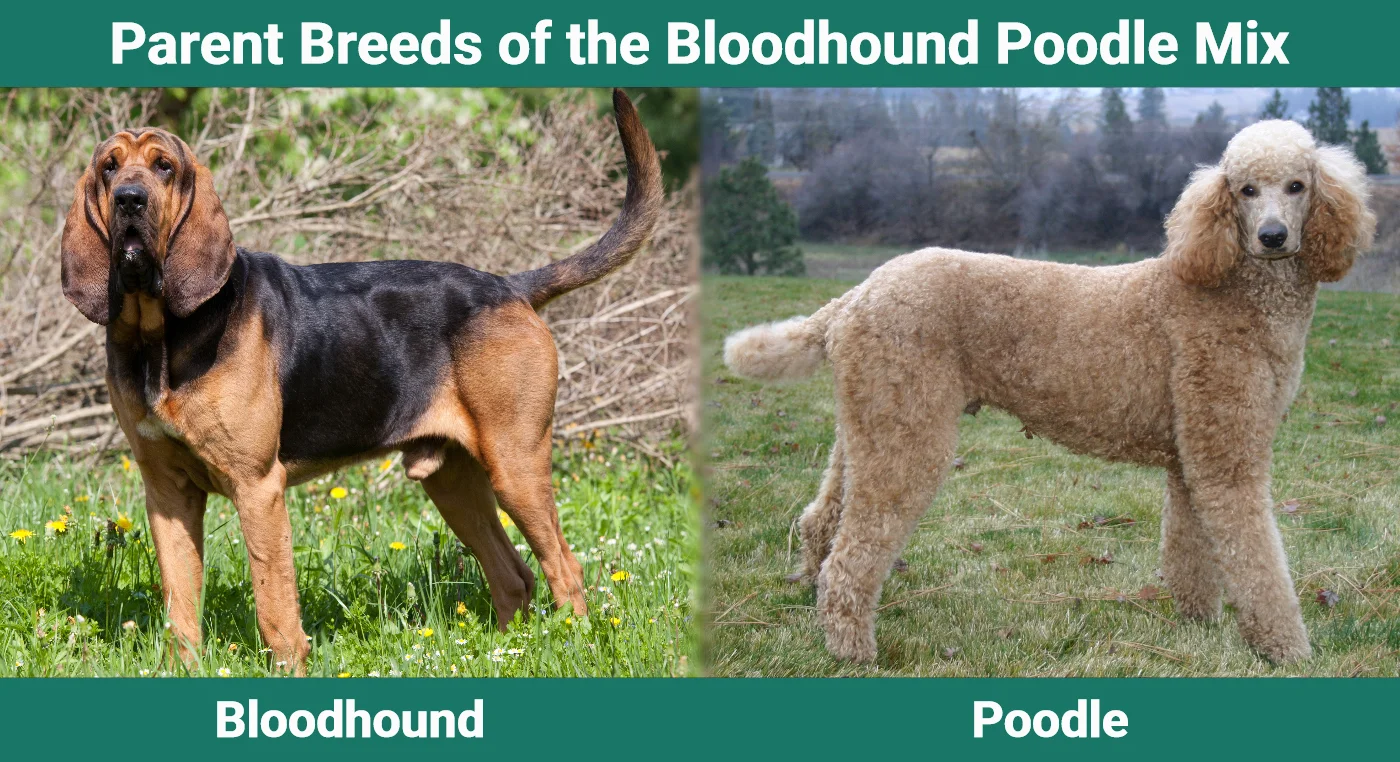
Temperament & Intelligence of the Bloodhound Poodle
As with all hybrid dog breeds, you need to look at the parent breeds to get a good idea of what their offspring will be like. In the case of the Bloodhound Poodle mix, you’ll find that this cross between Bloodhound and Poodle makes for a wonderful temperament. The Bloodhoodle is incredibly friendly and will get along well with almost anyone, including strangers (though they will bark to let you know when someone is at your door).
This canine will love joining you on the sofa for a good cuddle but will also need plenty of exercise, as they can be highly active. A Bloodhoodle will adore playing with you, the kids, and other pets in the home. These are pack dogs, so they won’t do well if left on their own for extended periods (though they can be independent at times).
Bloodhoodles are also fairly happy-go-lucky and a bit silly at times, so having one in your home will bring a lot of fun!
Are These Dogs Good for Families?
The Bloodhound Poodle mix should be a good fit for most families. The breed’s inherent friendliness extends to children; these dogs are fairly good-natured, so they can be patient. However, they’re still a larger breed and may get a bit exuberant at times, so if there are small children in the home, you might want to go with a smaller dog. Even with older children, it’s advisable to always keep an eye on the dog and kids while they’re playing.
Does This Breed Get Along With Other Pets?
Bloodhoodles can get along with other pets, particularly dogs. They may get along with cats, too, but as with any animal, the ability to get along with other pets requires extensive early socialization. The biggest issue will be if your dog takes more after their Bloodhound parent. Bloodhounds are trackers with a prey drive, so they may go after cats and dogs that are smaller than them. Bloodhounds can also sometimes be aggressive with other dogs if they’re the same sex.
Anything smaller than a cat should be kept away from the Bloodhound Poodle mix because of their prey drive.

Things to Know When Owning a Bloodhound Poodle
Now that you know more about the Bloodhound Poodle’s temperament and ability to get along with others, it’s time to delve into how to care for one!
Food & Diet Requirements
All canines need a high-quality dog food that meets their breed’s nutritional requirements. Besides finding a food high in protein (possibly a novel protein if your pet has inherited the Poodle’s sensitivities to certain foods), you’ll likely want to find a food specific to your pet’s size. When it comes to how much to feed your pet, you can either follow the feeding guidelines on the dog food bag or, better yet, speak with your vet. The Bloodhoodle can be active, so they may require a tiny bit more food than other dogs of their size.
Exercise
As far as exercise for this dog goes, you’re likely looking at about an hour of exercise a day. You can break this time down into smaller chunks, like a couple of 15-minute walks a day, then 30 minutes of playtime in the backyard. But ensure your pet is getting enough exercise each day; if they are not, they could get bored, resulting in destructive behaviors!
Training
Training a Bloodhound Poodle mix will entirely depend on which parent breed it takes after most. Poodles are incredibly intelligent and eager to please, so they tend to take to training rather well. But the Bloodhound can be a bit of a challenge to work with as they have a wide stubborn streak and prefer to be the one in charge.
In either case, it’s essential to begin training your dog and engaging them in socialization as soon as you bring them home. The earlier these things start, the better off you and your pup will be. And if you find yourself running into issues, you can find a dog trainer to help.
Grooming ✂️
How much grooming you need to do with your Bloodhound Poodle mix may depend on which parent it favors, too. Most Bloodhoodles will have a curly coat that’s only a low level of curly, which requires brushing a few times a week. But those curls may be smooth if they favor their Poodle parent more, which could require a bit more grooming. These dogs are also medium shedders, as Bloodhounds shed, but Poodles do not.
Besides being brushed a few times a week, you’ll need to bathe your dog as needed (but not often; Poodles are prone to skin allergies, so too much bathing could irritate skin). You’ll also need to check their ears regularly to ensure cleanliness and keep your pup’s nails trimmed.
Health and Conditions
Like all hybrid dog breeds, the Bloodhound Poodle can inherit health problems from its parent breeds. Below are a few serious and minor conditions you might find with the Bloodhoodle.
- Ear & skin infections
- Dental issues
- Allergies
- Bloat
- Cushing’s
- Addison’s
Male vs Female
You won’t find that much difference between a male and female Bloodhound Poodle mix. The only real difference will be that males are a few inches taller and weigh a few pounds more than females. Temperament-wise, though, they will be similar. The sex that is right for you and your family will depend on whether you’d rather pay for a spay or neuter (neutering a dog is less expensive) and whether you prefer to have a male or female dog in your home.
3 Little-Known Facts About the Bloodhound Poodle
There isn’t a lot known about the Bloodhound Poodle just yet since it’s so rare, but we certainly have a lot of history on this dog’s parent breeds!
1. If you don’t like the name “Bloodhoodle”, you can use one of the breed’s alternate names.
These pups are also known as “Bloodles” or “Poohounds”!
2. The Bloodhound breed came from monks.
The Bloodhound breed was developed by monks in Western Europe roughly 1,000 years ago. So, you could say the breed is divinely inspired!
3. France adopted the Poodle as its national dog.
The Poodle comes from Germany, not France, but that hasn’t stopped France from making the breed its national dog! The country refers to the Poodle as the “duck dog” or caniche.
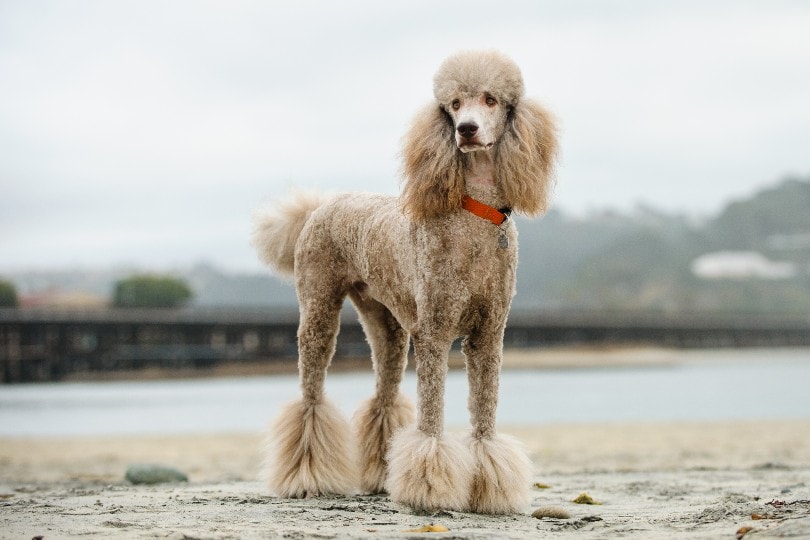

Final Thoughts
The Bloodhound Poodle mix is a rare breed, so you may have trouble tracking one down, but they make excellent pets for active families and singles. This unique hybrid dog is incredibly friendly and happy-go-lucky; however, they require a fair amount of daily exercise and activity. As long as they have plenty of playtime and walks, though, this cuddly pup will be an excellent addition to your home.
Featured Image Credit: Left – Degtyaryov Andrey, Shutterstock | Right – chili71, Pixabay

